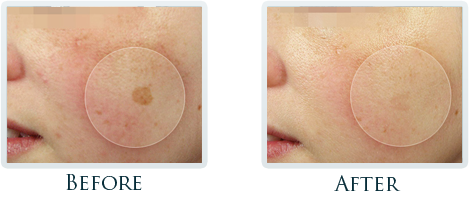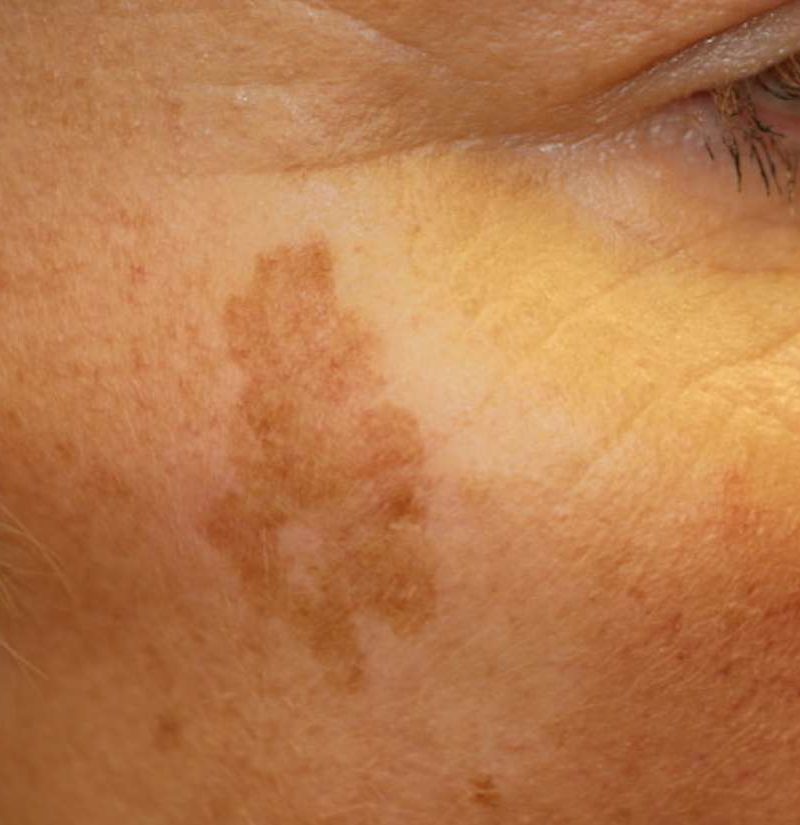
Liver spots typically appear as a dark brown spot or patch of red color on the skin: A patchy skin condition caused by an excess amount of melanin (pigmentation pigment) in the skin which can sometimes result from some foods, environmental conditions, or genetic problems. Your skin doctor usually determines the condition using skin biopsies and examinations if you have had many sun-related exposure, especially in the form of tanning. If you have a mole in the skin, this will also be determined by a biopsy. However, most people have liver spots that can be clearly seen on the skin.
Normally the liver is covered by a layer of skin called the epidermis
Liver spots can develop on any part of the epidermis and it is not limited to the liver alone. There are several different types of liver spots that are different from one another, depending on what caused them, where they appear on the skin and the color of the skin. The most common liver spots on the skin are freckles, and sun spots. Freckles and sun spots can often be found anywhere on the body including on the legs, chest, back, abdomen, upper arms, thighs, arms, and buttocks. When it comes to skin spots, the spots are more common on the neck and shoulders, but there are spots that can appear anywhere on the body.
Most cases of liver spots will go away on their own, but in some cases more treatments may be necessary. When you have a mole in your skin, a dermatologist will be able to determine if you have liver spots. If you do not have a mole, the dermatologist may perform a skin biopsy in order to confirm the presence of liver spots. A skin biopsy will reveal a sample of your skin tissue taken through a small, thin, clear needle.
Skin biopsies are performed in order to diagnose liver spots because this type of spot is not visible without a microscope. Your skin doctor will remove a sample of your skin by making a small incision at a point on your body near the mole. In order to obtain a blood sample, your doctor will puncture the skin with a tiny, hollowed out needle. This puncture will release a small amount of blood from the body's blood vessels, allowing the doctor to collect a small amount of blood for testing. to confirm the presence of liver spots. If your doctor finds the spot is indeed liver spots, your doctor will then conduct an examination to determine what might cause the spots to grow on your skin, which will help him or her determine the proper course of treatment.

Many reasons exist why you may have liver spots
One of these causes is the exposure to the sun. A sunspot is a result of the melanin pigmentation pigment in your skin being elevated in the body, which is a result of exposure to the sun. The higher the melanin content in your body is, the more pigmented your skin is. Although sun spot formation is an inherited trait, your doctor can determine the cause of your spots if they appear before the age of forty. If you've had sun exposure, the melanin content can be increased, causing the spots to develop.
Skin that appears red or blotchy is another reason that causes the spots to develop, particularly on the arms or legs. If your arms have a great deal of sun exposure, a dermatologist may recommend a sunscreen application or a chemical peel. to prevent future damage to the skin. Some doctors may prescribe a laser treatment, which eliminates the spots, but you should talk to your dermatologist about this before you make a decision regarding this treatment.
If the liver spots are due to genetics, a dermatologist can help you determine the specific gene responsible for the liver spots. Once this information is obtained, your doctor can use genetic analysis to find possible treatment options. If the spots are caused by the skin being overly oily, your doctor may prescribe a topical lotion that prevents the oil from building up on your face and neck. This can be very effective if used daily. If your spots occur during the summertime, your doctor can recommend sunscreen application to prevent the development of new spots. if your current spots are small in size.
Liver spots are relatively easy to treat. If your doctor determines that your spots are caused by a genetic abnormality, your doctor can suggest the appropriate treatment, which can include a topical lotion, or other treatment options such as skin peels and lasers. If your spots are caused by exposure to the sun, your doctor can recommend a sunblock to prevent future sun damage. to prevent future damage.